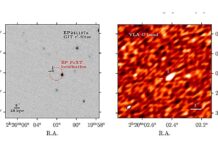Accurate chromosome segregation during cell division is fundamental for healthy cells and critical in preventing cancer development. When chromosomes don’t align properly, it leads to chromosomal instability—a hallmark of cancerous growth. While scientists know that a protein complex called the kinetochore orchestrates this process, the precise roles of many individual proteins involved remain unclear.
Now, researchers from Osaka University and MIT have uncovered a novel mechanism governing chromosome alignment and identified a potential therapeutic vulnerability for cancer treatment. Their study, published in Cell Reports, focuses on two motor proteins – KIF18A and CENP-E – which work cooperatively to ensure chromosomes are correctly positioned before cell division.
A Genetic Screen Uncovers a Weakness
The researchers used a clever approach: they studied cells with a mild pre-existing defect in their kinetochores caused by a mutation in the CENP-C protein. By performing a genome-wide CRISPR screen on these cells, they identified KIF18A as a crucial player. Disrupting the KIF18A gene proved fatal for these already compromised cells, highlighting a synthetic lethal interaction.
Further investigation revealed that this combined vulnerability stemmed from reduced activity of CENP-E. Essentially, the researchers discovered that KIF18A and CENP-E collaborate downstream of CENP-C to drive the initial stages of chromosome alignment.
Targeting Motor Proteins: A New Therapeutic Avenue
Importantly, cancer cells with naturally low levels of CENP-E were highly sensitive to inhibition of KIF18A alone. When both proteins were simultaneously targeted, the result was potent cell death. This finding suggests a promising strategy for cancer therapy: inhibiting these two motor proteins could selectively kill cancer cells while sparing healthy ones.
Exploiting Cellular Vulnerability in Cancer
The study’s key finding is that some cancers possess a pre-existing weakness – low CENP-E levels – which makes them susceptible to KIF18A inhibition. Measuring CENP-E expression in tumors could help identify patients who would benefit most from this type of targeted therapy. Additionally, combining drugs that target both KIF18A and CENP-E might further enhance therapeutic efficacy.
This research offers a compelling example of how understanding the intricate workings of cell division machinery can translate into novel cancer treatments.



























